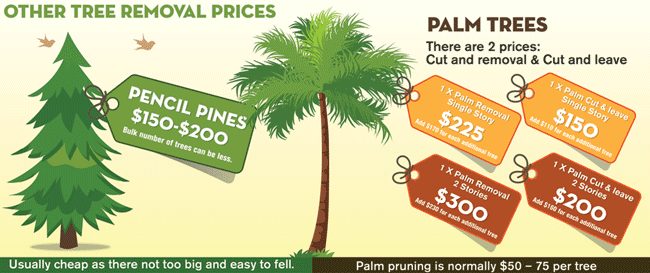The Future Of Trees: Just How To Determine When Elimination Is Called For
The Future Of Trees: Just How To Determine When Elimination Is Called For
Blog Article
Author-Dalby Britt
If you have actually ever before questioned the fate of the trees on your property, recognizing when it's time for removal is important. Yet just how do you identify if a tree can be conserved or if elimination is the only option? By trying to find certain signs and assessing safety threats, you can make educated decisions that benefit both your landscape and your environments. Let's discover the essential variables that enter into play when deciding the fate of a tree and just how you can make certain the very best end result for your eco-friendly friends.
Indications of Tree Decline
If you discover any of the adhering to indicators of tree decline in your backyard, it might be time to take into consideration tree removal.
One common sign is dead or rotting branches, which can suggest underlying problems affecting the tree's wellness. Look out for discolored or wilted fallen leaves that persist even with appropriate treatment, as this could be an indicator of condition or bugs.
An additional warning signal is too much leaning or a noticeable shift in the tree's base, which might suggest root problems or architectural instability. Watch out for fungal growth on the trunk or origins, as this can show rot and jeopardize the tree's stability.
Additionally, if you observe big fractures in the trunk or significant arm or legs, it's important to attend to these concerns quickly to prevent possible risks. Dealing with these indications of tree decrease immediately can help preserve the safety and security and aesthetics of your yard atmosphere.
Safety Worries
To guarantee the well-being of your residential or commercial property and those around you, prioritizing security problems related to trees is paramount. Trees can present various safety and security threats if not correctly maintained. Dead or decaying branches might fall suddenly, jeopardizing people or harmful frameworks.
Leaning trees can likewise be hazardous, particularly if they're leaning in the direction of a structure or high-voltage line. In addition, trees with substantial origin systems near foundations or below ground utilities can trigger substantial damage over time.
It's essential to on a regular basis check your trees for any kind of indications of possible danger. Keep an eye out for splits in the trunk, large cavities, or indications of condition and degeneration. If you see any of these concerns, it's best to talk to a specialist arborist to examine the scenario and identify the required course of action.
Taking aggressive actions to address safety and security problems promptly can avoid crashes and residential property damages in the future. Bear in mind, the security of your property and those around you need to always be the top concern when it involves tree maintenance.
Consulting an Arborist
When taking into consideration the health and wellness of your trees, consulting an arborist is a vital step. https://www.sfchronicle.com/business/article/PG-E-won-t-commit-to-hiring-a-set-amount-of-15099794.php are trained specialists that concentrate on the care and upkeep of trees. They can analyze the general health and wellness of your trees, recognize any kind of issues such as diseases or architectural problems, and offer expert referrals on the most effective strategy.
By consulting https://mgyb-thug.pages.dev/growth-maintenance , you can obtain useful understandings into the condition of your trees and identify whether elimination is needed. Arborists have the expertise and experience to evaluate the threats related to maintaining a tree versus removing it. They can also supply assistance on alternative services, such as pruning, cabling, or bracing, to assist maintain the tree whenever possible.
In addition, arborists can assist you navigate any type of local laws or permits that might be required for tree removal. Their competence can make sure that the procedure is performed safely and in compliance with any type of suitable legislations.
Final thought
To conclude, when identifying whether trees can be conserved or if removal is essential, it is very important to think about indications of decline and safety and security concerns. Consulting an arborist for a comprehensive assessment is vital in making the best choice for the tree's health and wellness and prospective threats. Bear in mind, positive care and prompt activity can help protect trees and stop accidents.
